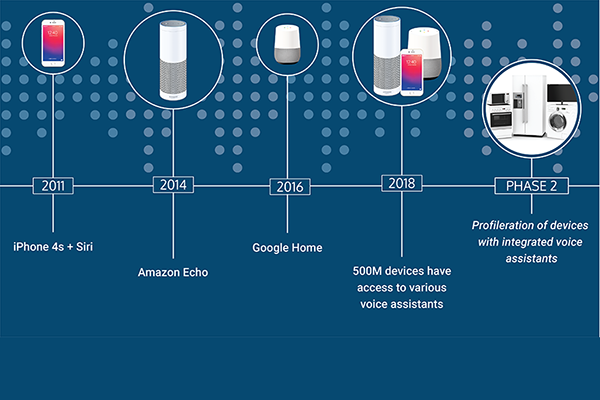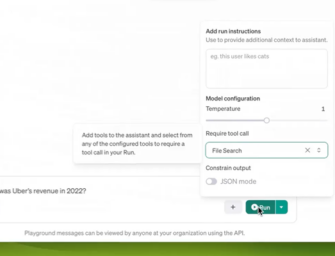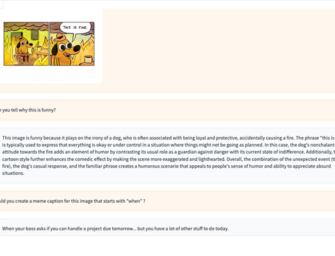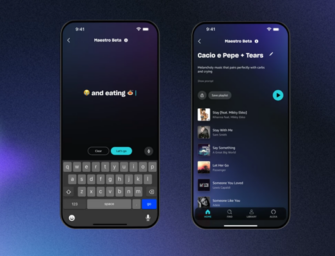Phase One of the Voice Assistant Era is Over. Long Live Phase Two.
Those of you that subscribe to Voice Insider saw this headline six weeks ago. We have had a lot of news since then and it consistently points to a new phase in the voice assistant era.
Smart speakers are now complemented by a host of smart displays from Amazon, Facebook, Google, JBL and Lenovo. Amazon decided to add to its Alexa portfolio a microwave, clock, subwoofer, DVR, car dashboard voice input and several other devices. Google is rolling out Duplex in four cities next month and has a new service for screening calls. Facebook’s camera will follow you throughout the home. Amazon filed a patent that depicts Alexa detecting when you have a cold and offering to sell you chicken soup and cough drops. Talk about selling in-context.
In a 2016 interview with Walt Mossberg, Jeff Bezos famously said that he not only thought that voice assistants were in an early stage of development, he used a baseball analogy saying, “It’s the first inning. It might even be the first guy is up at bat. It’s really early.” Well, it’s no longer early. In fact, we can confidently conclude phase one of the voice assistant market is over. That is not to say the industry is yet mature—far from it. However, there are several signs that point to a market past its early adopter phase.
Demand Side Signals – Consumer Use of Smart Speakers
If we simply take an empirical view we see that more than 20% of U.S. adults claim to own a smart speaker. The traditional model of technology diffusion says that early market comprises the first 16% of product adoption. We have clearly passed that threshold in the U.S. In Canada, Australia and Japan, we are still well under 10%. Germany is a little ahead and the UK is very close. However, I don’t look at the 16% threshold as a strict marker in a sector as large as voice assistants because that simply reflects the demand side of the equation. Then again, it is a signal to watch and at least three countries will pass the threshold in 2018.
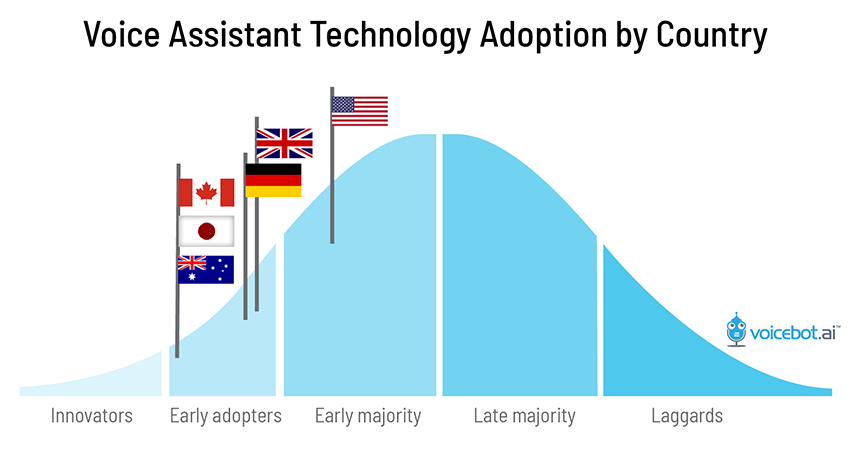
Supply Side Signals
The supply side provides us more evidence. First, we see an emerging set of minimum market requirements emerging. It is easy to get distracted by the Amazon Alexa and Google Assistant race to introduce more features. The shift to feature competition is a hallmark of an early majority market not a early adopter market.
But, that’s not all. What these two products have done collectively is set a standard that all newcomers must match. When Samsung introduced Bixby on Galaxy S8 in 2017, it was immediately compared to Google Assistant. When Apple introduced HomePod, it was the inadequacy of Siri compared to Alexa and Google Assistant that was the most frequent criticism. Complaints on Reddit over the new Bose 500 smart speaker center around its lack of multi-room audio. That is despite the fact that the Bose 500 has Alexa as the resident voice assistant. Close is not good enough. Consumers expect Alexa on Bose to include the same features of Alexa on Echo. That is a standard now.
Despite these consumer demands or maybe because of them, many traditional device makers are looking to either introduce a smart speaker or launch their own voice assistant. Everyone sees the market adoption and wants a piece of the action. This has led to both copy-cat products and new ideas in the smart speaker segment. In the smartphone segment, it has led to device manufacturers and telecom providers contemplating whether they can deliver their own assistant (e.g. Huawei, Samsung, Deutsche Telekom, Orange Telefonica) to compete with the existing players, should just adopt another technology from an up-and-comer (e.g. DuerOS, Cortana, Hound) or just fall in line and work with a leader.
Third-party Products Commit to Voice as a Feature and Channel
Then there are the third-parties looking to use voice as a channel. Amazon announced at the end of August that there are 50,000 Alexa skills worldwide and 20,000 Alexa compatible products. The compatibility figure has grew 5x in eight months. Google followed quietly by updating their figures to 10,000 Google Assistant compatible products, a seven-fold increase in nine months.
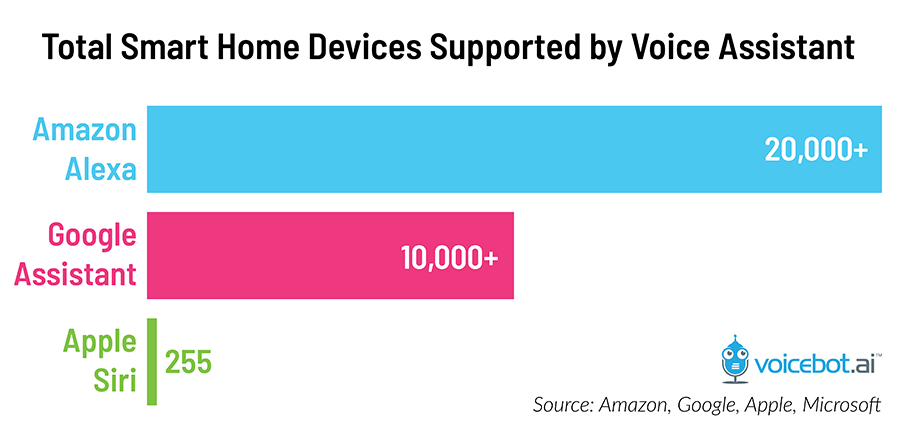
But, it’s not just device makers. Homebuilders are now incorporating voice activated features into new homes. Lennar has several communities that come pre-wired with Alexa devices. KB Home has decided to offer Google Assistant devices and compatible smart home products.
The bandwagon effect is in full swing. Device makers and even homebuilders want to have the Alexa halo encircling their products. Others see Google Assistant as an essential player that is accessible on 500 million devices. Combined, this represents a lot of third-party energy that generally signals a market beyond the days of early adopters.
Adjacent Market Signals
We also see the migration of voice assistants into existing products. Televisions, media consoles, appliances, lamps, light fixtures, thermostats, WiFi routers, ear buds, headphones, watches and more are getting microphones so they can incorporate voice assistant features. Voice has such utility it wasn’t going to stay trapped inside a plastic cylinder for very long. This shift of voice beyond smart speakers and early versions for smartphones is in full swing. Smart speaker adoption will continue to grow at a rapid pace, but the new action is already shifting to other surfaces. That includes smartphones, cars, appliances and more.
It is fair to say that phase one of voice assistants is over on both smartphones and smart speakers. Although smartphone-based voice assistants had a three-year head start on smart speakers, what we saw was a longer incubation period. It may be that the start of phase two on smartphones is still several months off, but it will be close enough that we will be able to call phase two of voice assistant adoption officially underway on both device types. Smartphone users will expect similar capabilities of their voice assistant as when using a smart speaker as well as features optimized for mobile use cases.
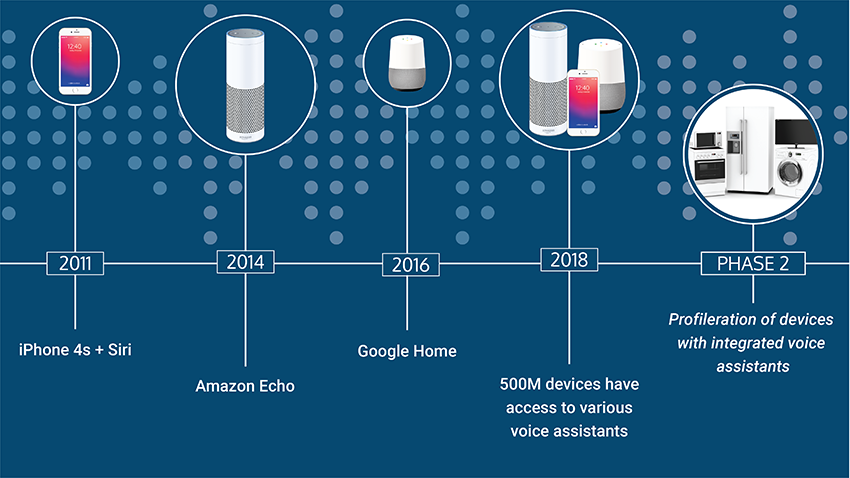
So what?
Why should we care what adoption phase we are in? Because it impacts consumer expectations and the types of strategies you need to employ.
If you are in the smart speaker device segment, welcome to a crowded market with well established players, others looking to solidify their footing and some just getting started. If you are in the smartphone segment, it’s time to rethink how voice will change the touch and swipe paradigm. If you are in software or content, you need to think not only about becoming voice accessible, but also how to work seamlessly across surfaces and which assistants to merit more attention.
The dynamics have changed. Siri ushered in the mass-market voice assistant era but stagnated. Amazon Alexa picked up the leadership mantle by creating an entirely new set of use cases, features and context. Google came along to show how quickly scale could be achieved across countries, languages and devices. Along the way, consumers noticed that voice recognition has improved, natural language understanding has improved and this new class of voice assistants are quite useful.
Now everyone is scrambling to figure out how to best incorporate voice into their products and whether they should consider it. Good luck trying to sell wireless speakers or smart home devices without voice compatibility.Voice is quickly becoming an expectation. For several product categories it is now a minimum market requirement. Product makers have recognized the shift and are responding. All of that energy and attention is going to be good for consumers. Expect the voice assistant market to accelerate as innovation continues to deliver more value.
Follow @bretkinsella Follow @voicebotai
Google Assistant News Roundup From September and October 2018


